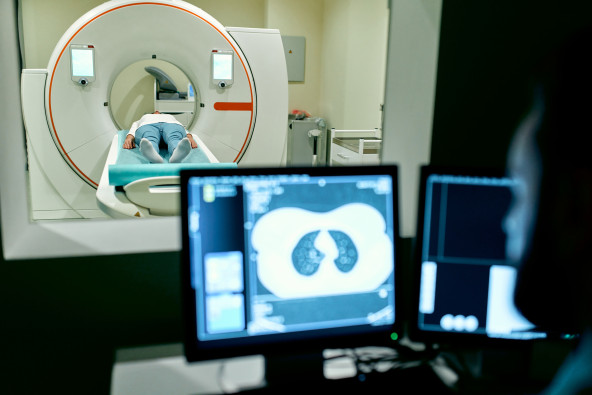Adapted products - new obligations for healthcare professionals § 9 MPDG paragraph 1

§ Section 9 MPDG paragraph 1
Without prejudice to the obligations applicable to distributors and importers (...), any natural or legal person who adapts a mass-produced device to the specific characteristics and needs of an individual patient as laid down in a written prescription shall document the following:
the written prescription,
the adaptation data, insofar as these are not already part of the written prescription,
the information necessary to identify the patient
the information required to identify the customized product, and
the declaration that the device has been adapted in accordance with the current state of the art.
The documentation must be kept for ten years. Upon request, the documentation must be presented to the competent authority."
In addition, the patient must be provided with a declaration that includes the information according to no. 1, 2, 4 and 5. The regulation therefore entails considerable documentation and retention obligations. § Section 9 MPDG contains legal requirements for the processing of blanks, i.e. medical devices that must be adapted to the individual patient without changing their intended purpose.
Orthopaedists who adapt a prefabricated shoe insole in accordance with a doctor's prescription or opticians who grind the prefabricated spectacle lens accordingly are just two examples. The blank is a mass-produced product that is adapted to the specific characteristics and needs of an individual patient.
From the old legal situation to Section 9 MPDG
According to the old legal situation, such blanks were considered intermediate products and could be provided with a CE marking by the manufacturer (Section 6 (2) sentence 2 MPG). The processing of these intermediate products by the healthcare professional was then considered a custom-made product.
According to the old legal situation, the healthcare professional was therefore the manufacturer of a custom-made product, but was not required to carry out his own conformity assessment procedure. However, this provision has not been included in the MDR or the MPDG. This means that, according to the MDR, healthcare professionals who process a blank would be manufacturers of a custom-made device and would have to carry out a conformity assessment procedure for this custom-made device.
In order to protect healthcare professionals from these strict consequences, the national legislator created the aforementioned Section 9 MPDG. The healthcare professional is therefore not the manufacturer of a medical device, but the adapter of a mass-produced medical device. This is accompanied in particular by the above-mentioned documentation obligations. In this way, the legislator intends to regulate "the responsibility for the quality of the fitting" and "ensure a minimum level of traceability of the products (...)" (BT-Drs. 19/15620, p. 124).
Scope and form of documentation
However, some of the documentation requirements are not clearly formulated and only make sense when the explanatory memorandum to the law is consulted: it is not immediately clear from reading the law why, in addition to No. 2, information is also required to identify the adapted product (No. 4): After all, the product can already be identified as such by the customization, which is always individually tailored to the patient. It is clear from reading the explanatory memorandum to the law that the legislator is concerned with the healthcare professional recording which blank he has used. No. 4 should therefore be read as "the information required to identify the (mass-produced) product used".
The adaptation data mentioned in No. 2 is also not easy to understand: The explanatory memorandum to the law cites measurement protocols for hearing aid fittings as an example here. This means that the fitting data to be documented must be reassessed on a case-by-case basis.
The form in which the documentation must take place is also not expressly regulated. Written documentation is therefore obvious, but there are also no fundamental objections to digital documentation.
Handing over the documentation to the patient
In addition to the documentation, the patient must be given a declaration with the following information in accordance with Section 9 (2) MPDG:
the written prescription,
the fitting data, if these are not already part of the written prescription,
the information required to identify the adapted product, and
the declaration that the product has been adapted in accordance with the current state of the art.
These aforementioned contents result directly from the wording of the law. Not regulated by law, but mentioned in the explanatory memorandum, are
the date,
the place of issue and
the name and address
of the fitter.
To be on the safe side, these points should also be included in the declaration. It is questionable why this information has not been included in the wording of the law. This information is particularly useful in view of the traceability of the adapted products.
The law does not provide for an exception to this obligation. This means that every patient who receives an adapted product from a healthcare professional must be given this declaration.
Assessment
The new Section 9 MPDG is in part very unclearly worded and often only reveals its meaning after consulting the explanatory memorandum. The regulation also creates a considerable bureaucratic burden for healthcare professionals.
In particular, the ten-year retention obligation should be borne in mind. On the other hand, this new regulation spares healthcare professionals the (even stricter) consequence of being considered a manufacturer of a custom-made device under the MDR, for which a separate conformity assessment procedure would have to be carried out. Healthcare professionals are therefore well advised to familiarize themselves with Section 9 MPDG.
